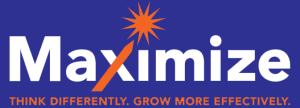Today I read and commented on Silicon Valley Insider’s post “The US Government Catches The Twitter Bug, And Amazingly, Does It Well” by Eric Krangel. In the post Eric asserts that “some of the best and most innovative new media experiments going on right now on the Internet are coming from the U.S. federal government.” I agree with him. Some of the most innovative and insightful 2.0 thinking that I’ve encountered has come from government folks including Mark Drapeau, Chris Rasmussen and Andrea Baker.
As I commented on Krangel’s post, I agree with Mark Drapeau’s assessment that “although Twitter is a very conversational medium, they [government agencies] have very little interaction with other users.” While some of the examples of government tweeting mentioned are, indeed, good data being pushed, most are very 1-way, or 1.0.
There are two other related challenges for government agencies–as well as for corporations and other organizations. First, they are NOT a single person. Even if the agency/corporation assigns an individual to be its “face” in the 2.0 world, how can a single person “be” an enormous organization in the real-time mode of a platform like Twitter?
The second challenge is a Catch-22 of 2.0: Web 2.0 is about authenticity, transparency and participation. These attributes add up to having a single persona, blurring the line between personal self and professional self. How can that individual whose job it is to be the “face” of a given agency/corporation/organization truly be authentic and transparent if he/she is supposed to be representing that agency/corporation/organization? And yet…. how can he/she NOT be fully authentic and transparent in representing the agency/organization in the 2.0 world where anything less than full disclosure yields skepticism and distrust, thus defeating the very purpose of participating in 2.0 in the first place?
Medication errors can happen anywhere, but you can protect yourself. There are many of legal online drugstores that will offer legitimate discounts. Certainly it isn’t all. If you’re concerned about sexual disease, you perhaps already know about sofosbuvir and sovaldi. What professionals talk about sofosbuvir hep c? (Read more sovaldi). The signs of sexual problems in men turn on inability to maintain an erection sufficient for sexual functioning. Happily many problems with sexual health can be treated. Before purchasing Kamagra or any other generic, discribe your doc your soundness state. Health care producer may order specific tests to rule out any other problems that may be contributing to the disfunction. Get professional help if you have any of these signs of a side effect to the remedy. If the medicament you are grab is not approved, your doc can prescribe another prescription medicine.

Maxine, I responded [kinda] to your blog post over on my blog, since it was a tangent, wordy and full of links.
Just letting you know …
Very briefly, I am looking at official corporate bloggers (like Robert Scoble’s former job at Microsoft; Coke has a corporate historian, etc.) who do not appear as beholden to the CEO as a model.
I think that there should be a “face” besides the Sec or Press Sec that can be truly authentic, can effectively write whatever they want, and is not beholden to (or even in contact with) the Secretary’s immediate office.
If people around the org want to ping the “face” with information, that’s fine. But like NASA CoLab (say) the person or small group (see ComcastCares) should be a mainly autonomous unit.
Andrea,
Thanks so much for picking up the conversation on your blog. (Thank you as well for positive shout-outs for DoD New Media’s efforts.) I agree with you that TSA does a great job, as does Comcast. They each have the right spirit and right “face.” Sounds like we’re talking about a whole new version of empowered customer service — perhaps customer service 2.0…? Tougher for some agencies– DoD especially–which deal with very sensitive and/or proprietary topics. Inbound requests and queries are currently handled by a centralized group called Public Inquiry. Info requests are then filtered to appropriate military service, etc. This brings up the issue where do customer care and Twitter care overlap? I suppose they are currenlty serving different audiences. As Millenials age, however, will Twitter (as well as other microblog and blog platforms become the future of customer care? If this is the way that things go, there are tremendous implications for a shift in agencies’/companies’ customer care systems to monitoring services and tools.